Partisanship and Spectrum Policy

Here is some of the coverage of a recent hearing of the Subcommittee on the GPS/LightSquared issue by our fellow bloggers at Ars Technica.
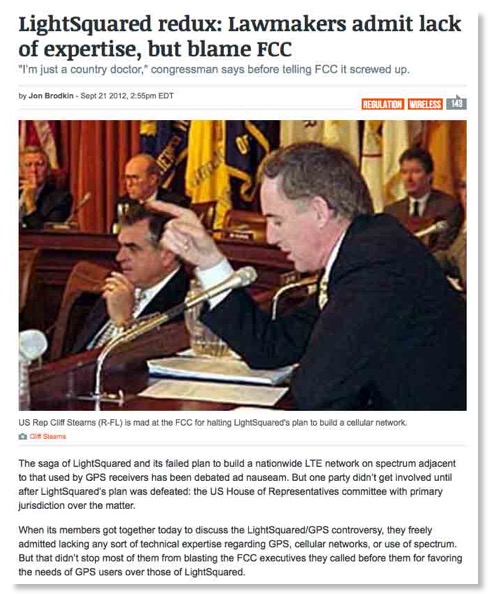
The hearing, video of which is available below, had the committee members chewing out my former colleagues International Bureau Chief Mindel De La Torre and OET Chief Julius Knapp, on why they halted LightSquare’s system. They repeated insisted on yes/no answers on questions that were complex and had not straightforward answers. Here is an example:
Rep. Stearns: “Each operator has the responsibility to stay in its lane, using your analogy, is that correct?”
De La Torre: "Yes."
Rep. Stearns: “When one operator veers into the adjacent lane, is it the responsibility of an operator to correct its course, or is it the role of the FCC to patrol the highway? Briefly."
De La Torre: “Really, what was happening here was…”
Rep. Stearns: “Isn’t it the responsibility of the operator to correct its course? Yes or no?”
De La Torre. “It’s a difficult question. That’s the question that's before us, and I think…”
Rep. Stearns: “Yes or no? I'm asking for a yes or no, to the best of your ability.”
De La Torre: “I think they do have a duty to respond…”
Rep. Stearns: “OK, I'm going to take that as a yes.”
One of the odder exchanges was reported by Ars Technica as:
US Rep. Brian Bilbray (R-CA), an avid boater, said he understands the importance of GPS for safely finding one’s way home. But, "on the flip side," he said, more spectrum devoted to iPhones can improve safety too. "Just as much as GPS is essential there are thousands of people offshore every day that would have a huge safety factor if they could pull up an iPhone, and from 200 miles offshore be able to call for emergency services," he said. "This has a safety issue going both ways."
Rep. Bilbray, conventional cell phones including iPhone, do not work and will never work from “200 miles offshore”. MSS systems like Iridium and the service offered by LightSquared’s presently operational MSS system (designed to share spectrum with their proposed but threatened terrestrial ATC system) do. It is ironic that what triggered the current imbroglio was LightSquared trying to offer cellphones that were terrestrial only as opposed to bulkier ones previously authorized by FCC that included both MSS and terrestrial(ATC) service.
Months before the Republicans of the Energy & Commerce Committee came late to the GPS/LS issue, their fellow Republicans on the House Armed Services Committee criticized FCC for the exact opposite reason: why did they ever consider authorizing LightSquared as opposed to kowtowing to GPS interests and their self-centered view of spectrum policy.
So House Republicans, which is it? Is the current FCC wrong for considering LightSquared at all or it is wrong for not defending them again GPS interests? Perhaps both reasons are good enough to bash the present FCC and by implication the White House? Note that there were multiple FCC decisions under Chmns. Powell and Martin that supported ATC and LightSquared and its predecessors and that GPS interests participated in those decisions without major complaints at the time.
On September 13th, the Committee’s Subcommittee on Communications and Technology dumped on NTIA at the behest of cellular interests.
This time NTIA’s Karl Nebbia was beat up by the subcommittee members who were really angry over the PCAST report that Karl probably personal dislikes but had to defend as part of his job. While the free trade press did not cover this event, Keystone Public Affairs has posted this summary.
In both September hearings the committee’s subcommittees were trying to make partisan hay out of US spectrum management issues. The reality is that there are major problems in our present spectrum policy decision making in the US as any longtime reader of this blog has read multiple times. The roots go back decades and are bipartisan in nature. What we really need to to keep spectrum policy bipartisan as it generally has been and work together to improve the process.
CNN's Dr. Sanjay Gupta on Cellphone Safety
CNN recently posted the above video of Dr. Sanjay Gupta talking about cell phone safety. For those who have been on Mars, Dr. Gupta has an unusual resume: He is “is a member of the staff and faculty at the Emory University School of Medicine. He is associate chief of neurosurgery at Grady Memorial Hospital and regularly performs surgery at Emory University and Grady hospitals.” He also won “multiple emmies” and was named one of the Sexiest Men of 2003 by People magazine. It was widely reported that the Obama Administration offered him the post of US Surgeon General.
Is this video a perfect discussion of cell phone safety? No. First it talks about people spending hours each day on cell phones that are held next to their head. There are clear indications that voice cell phone use is decreasing as broadband use builds up. You just don’t hold a cellphone next to your head while surfing the web, checking e-mail, or watching video. Next as cell phone networks are building out and become denser, the distance to the closest cell site is decreasing and the typical cellphone actual transmit power is decreasing also.
However, the cellphone industry isn’t doing a great job either other than telling you that cellphones “meet all federal standards”. Didn’t they notice that nearly half the electorate doesn’t trust the federal government? They certainly don’t trust EPA that had a major hand in drafting FCC cell phone standards, so why - by implication - should they trust the cellphone industry’s endorsement of these standards and their safety?
Since CTIA is boycotting San Francisco over its “hostility” to the industry, I hope they are consistent and ban both CNN viewing in their offices and carrier advertising on CNN in response to this video OR we could improve the quality of the dialogue from both sides on this issue of key public interest.
Kudos to AT&T for its New "It Can Wait" Campaign on Texting While Driving
AT&T produced video
AT&T now has a website ItCanWait.com with videos about texting and driving and the danger as well as information on pledging not to text. Check it out!
39 states now ban texting while driving.
CTIA’s position is confusing due to a web mixup. If you search for consumer information on their website on tips for safety and driving, you get caught in a loop between this URL and this other URL. (When CTIA fixes this I will post updated information.)
On the advocacy part of the CTIA website one finds this statement:
CTIA-The Wireless Association® and the wireless industry believe that when it comes to using your wireless device behind the wheel, it’s important to remember safety always comes first and should be every driver’s top priority. While mobile devices are important safety tools, there’s an appropriate time and an inappropriate time to use them.
The wireless industry defers to consumers and the driving legislation they support – whether that’s hands-free regulations or bans on talking on their mobile devices while driving.
At the same time, we believe text-messaging while driving is incompatible with safe driving, and we support state and local statutes that ban this activity while driving.
We also agree with proposals that restrict or limit cellular use by inexperienced or novice drivers. Just as many states have graduated drivers' laws, such as restricting the number of passengers or nighttime hours of driving, the industry believes restricting a young driver's use of wireless while becoming better-skilled at the primary driving tasks makes sense.
The NY Times reports that David D. Teater, senior director of the National Safety Council, said he was pleased to see telecommunications companies, including AT&T, no longer lobbying against laws aimed at curbing driver distraction caused by electronic devices. “We’d love their support on the legislative side,” he said of AT&T’s position. “But the fact they’re not opposing us is good.”
On Sept. 30, AT&T will offer a free, revised version of its DriveMode app for Android and BlackBerry phones that will automatically disable texting when the phone is traveling more than 25 miles an hour.
While all the carriers discourage texting and driving to some degree and some discourage teenage use of cellphones when driving, they are notably silent on the general issue of cellphone voice use while driving. I recall a decade ago Chmn. Hundt urged the cellphone industry and the auto industry to collaborate on a standard for hands free cell use in cars - not much came of it. Of course, now it is not certain if hands free cellphone use is actually any safer than handset use.
Communications technology should enhance life, not threaten it.
FCC IG: "Fast and Furious" Report Highlights Comparison with Other Agency IGs Who Do Their Whole Job
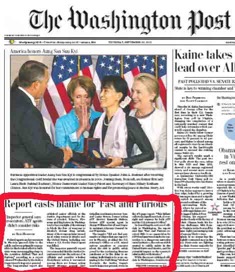
While the current IG does not have this background, he has continued the pattern set by his predecessors and focused almost exclusively on the fraud aspect of his charter (with the Universal Service Fund and Telecommunications Relay Service there is certainly enough fraud in FCC-related programs to keep one busy) with occasional forays into obscure issues such as “procedures to ensure that digital copiers or scanners, when going off lease or being deaccessioned, contained no sensitive, confidential, or personal data.”
As I have written before, “A credible IG would make FCC more credible”. At NRC, another independent commission, the IG played a key role in curbing the excesses of their recently departed chairman. Clearly Chmn. Martin had no fear that FCC’s IG would similarly cramp his style as his excesses forced the FCC into being dysfunctional during his term. Yet the FCC IG, the NRC IG, and the DOJ IG have the same statutory charter.
The fact that the FCC IG is appointed by the Commission not the President does not give him a free pass on his mandate to review existing programs and activities for their effectiveness. Indeed, the nonpresidentially appointed IGs, such as FCC’s, have special protection against arbitrary dismissal to encourage their independence.
So, FCC IG David Hunt, if you want to start doing your whole job here are some topics you might want to dig into that go back more than a decade:
- Why does the FCC consistently ignore Section 7 of the Communications Act?
- Does the lengthy delays associated with new technology deliberations discourage capital formation for wireless technology innovation unnecessarily?
- Why do petitions to FCC consistently get “lost” without any visibility and FCC and go for years without any action? (Here’s an example.)
- Why has FCC been unable to resolve the Docket 10-4 controversy even though the stalemate is clearly hurting all parties including the public?
ITIF Holds 2nd Workshop on PCAST Report
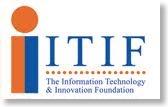
Here is the description:
The President's Council of Advisors on Science and Technology (PCAST) recently issued a controversial report on spectrum policy. The report declares the current system of spectrum reallocation "unsustainable" and recommends that the sharing of raw spectrum by multiple network operators should be the new norm. The panel will explore the report's many findings and recommendations in order to answer the following questions:
What is the current system for spectrum assignment?
Is the current system sustainable?
How fast is the government's appetite for spectrum growing?
How can we best manage competing demands for spectrum in the commercial and government sectors?
Is it practical to replace exclusive licensing with a raw sharing regime?
Are there alternatives to exclusive licenses and unlicensed access?
What options will advances in technology provide to spectrum policymakers?
The speakers, in addition to your blogger, will be
Richard Bennett, Senior Research Fellow, Information Technology and Innovation Foundation
Michael Calabrese. Vice President & Director, Wireless Future Program,The New America Foundation
Preston F. Marshall
Deputy Director of the Information Sciences Institute, USC Viterbi School of Engineering
Peter Rysavy, Rysavy Research
Stephen J. Norton,Communications Director,Information Technology and Innovation Foundation, Moderator
Here is the link to signup.
FCC Schedules Action on PCAST Report
Today, FCC Chairman Julius Genachowski joined PCAST members Eric Schmidt and Mark Gorenberg at Stanford University. Specifically, he announced that the FCC will, by the end of the year, initiate formal steps to implement the key recommendations of the PCAST report, including small cell use in the 3.5 GHz band. Freeing up spectrum in this band will add 100 megahertz to our nation’s wireless broadband networks.
FCC Chairman Julius Genachowski said, “Today’s iPhone announcement and last week’s release of the new Kindle Fire, Windows 8/Nokia Phone, and Droid RAZR by Google/Motorola offer the latest evidence that, over the past few years, the U.S. has regained global leadership in key areas of communications technology. These high-performance devices, and the demands they place on our broadband networks, underscore a critical challenge.”
“Today, I announce the FCC will initiate formal steps by the end of the year to implement keyrecommendations of the President’s Council of Advisors on Science and Technology report around freeing up spectrum in the 3.5 GHz band. This action will represent a major innovation in spectrum policy that will in turn enable innovations in wireless applications throughout the economy, including energy, healthcare, education, and other uses yet to be discovered.”
Wireless Week had reported in July
FCC Commissioner Ajit Pai said he has "serious concerns about the report’s apparent dismissal of clearing and reallocating federal spectrum for commercial use."
Though "spectrum sharing has its place... I continue to believe that clearing federal spectrum bands and reallocating them for exclusive commercial use is a critical component of any sensible spectrum strategy," he said.
While CTIA has no statement as yet on the new statement by Chairman Genachowski, they indicated in July their primary interest is in reallocation of spectrum, not sharing. They stated then
.At the same time, and as Congress recognized in the recently-passed spectrum legislation, the gold standard for deployment of ubiquitous mobile broadband networks remains cleared spectrum.
Cleared spectrum and an exclusive-use approach has enabled the U.S. wireless industry to invest hundreds of billions of dollars, deploying world-leading mobile broadband networks and resulting in tremendous economic benefits for U.S. consumers and businesses
The real issue is not whether industry would prefer reallocations of federal spectrum, but rather whether that is practical in a timely way, especially considering the current arrangements for federal spectrum management. Thus while in July AT&T said
“We fully support the NTIA effort of determining which government bands can be cleared for commercial use, and we look forward to continuing to work with NTIA and other stakeholders to make more spectrum available for American consumers and businesses.”
the reality is that NTIA as presently structured is in no position to make such determinations. NTIA may have the same nominal 47 USC 305 power as the Nixon era Office of Telecommunications Policy, Larry Strickling is no Tom Whitehead! This is not because of Strickling’s intentions and competence, but serving as Assistance Secretary of Commerce he does not have the political horsepower to tell other agencies how to spend their own money on wireless systems.
It seems odd that the cellular industry, in all its griping about the PCAST report, has not made any statement on Section 5 which deals with reform of federal spectrum management. At the October 3 FCBA Engineering and Technology Practice Committee brown bag lunch in DC, one of the PCAST contributors, Preston Marshall, will speak alongside Chris Guttman-McCabe of CTIA and former NTIA Administrator Larry Irving. I will post signup details when available. Perhaps we will hear more on this issue at that time.
The PCAST report states near the beginning
PCAST finds that clearing and reallocation of Federal spectrum is not a sustainable basis for spectrum policy due to the high cost, lengthy time to implement, and disruption to the Federal mission. Further, although some have proclaimed that clearing and reallocation will result in significant net revenue to the government, we do not anticipate that will be the case for Federal spectrum.
I suspect as long as the current practices in federal spectrum management continue this will be the case. At present the IRAC is the real judge of “high cost, lengthy time to implement, and disruption to the Federal mission” and NTIA lacks the independence and resources to review these issues objectively. For example, at a House hearing today, NTIA reallocation cost/time estimates were disputed by GAO:
Mark Goldstein, director of physical infrastructure issues for the GAO, said that some of the info NTIA used to make that cost/time estimate was not accurate, and that the system it used for gathering it would not change for several years.
But there are other agencies that regulate federal government activities in a more objective way then NTIA. For example,
- OPM regulates personnel practices,
- GSA regulates real estate use,
- OSHA regulates worker safety issues,
- EPA regulates environment impact of federal agency activities,
- NRC regulates use of radioisotopes and reactors (other than those involved in weapons production), and
- NSA regulates communications security practices.
These agencies do not kowtow to their fellow agency regulatees as NTIA does - although in the NTIA case this is a result of structural weakness, not poor intent.
Federal spectrum management need a similar objective regulator that focuses on the overall national interest, not the near term interests of the IRAC members. Maybe the creation of NTIA in 1978 was reasonable at the time, but the proposals of section 5 of the PCAST report go a long way towards creating the basis for greater use of the spectrum in the public interest either through sharing or reallocation. Perhaps the cellular industry will formulate a viewpoint soon on where they stand on federal spectrum management reform and not just gripe about sharing vice reallocation.
Satellite Jamming Case 25th Anniversary

On September 6, 1987 as the country was enjoying the Labor Day weekend, cable viewers exercising their 1st Amendment right to watch the Playboy Channel (now PlayboyTV) were surprised to see the above image on their TV rather than Three Daughters, the film that was being shown.
On April 27, 1986 the first known incident of intentional domestic satellite jamming took place involving HBO’s satellite signal for cable TV. Below is a news story about it:
While some viewed it as a prank, satellite owners were validly concerned that such jamming used higher power than the satellite was designed for and could permanently damage a satellite transponder. Your blogger was part of an FCC/FOB (now Enforcement Bureau) team that identified the party responsible for the jamming within a few days and with both technical evidence and circumstantial evidence convinced him to plead guilty to a misdemeanor.
Within 6 months Congress, at the encouragement of the satellite industry, passed 18 USC 1367 making such jamming a felony:
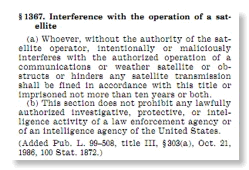
(It is hard to imagine Congress dealing with such an issue so fast now, but the speed was an indication about the concern over this issue at the time. Note that this section was passed contemporaneously with Section 333 of the Communications Act on jamming in general, makes “willful or malicious interference” a misdemeanor and is interpreted by the cellular industry as denying FCC, but not NTIA, authority to authorize jamming in any circumstance. Note further that 18 USC 1367(b) specifically exempts “any lawfully authorized investigative, protective, or intelligence activity of a law enforcement agency or of an intelligence agency”. FCC has never ruled on any interpretation of Section 333.)
Given this recent legislation, less than a year old at the time of the Playboy incident, FOB repeated the thorough type of investigation that identified the source of the Captain Midnight jamming the previous year in less than a week. It took a few days longer than the first time, but the team - basically the same people as in the previous case - identified the perpetrator as Thomas Haynie, an employee of Pat Robertson’s Christian Broadcasting Network, now CBN. Since Robertson was running for the Republic nomination against Bush (41) at the time, this made the case a political hot potato! At no point during Mr. Robertson’s candidacy did information about this case leak out.
While there was never any evidence that anyone else in CBN was involved in planning or executing the incident, there was later clear evidence that CBN staffers gave false and misleading statements to investigators and actually destroyed evidence, perhaps as part of a “coverup”. It appeared that CBN paid the full legal defense cost of Mr. Haynie’s later trial, estimated to be about $300,000 - apparently from funds it collected as charitable donations for its main mission.
Haynie was convicted in 1990 after a jury trial in Norfolk and in 1991 the 4th Circuit Court of Appeals upheld the conviction. The appeals court decision is a good summary of the trial and the evidence presented.
Last night 8 of the veterans of this case gathered to reminisce about it. Most of us had not seen Dick Smith, former Chief of FOB and later OET, in many years and were pleased he took time from a family visit to join us. In the 25 years since this incident and its successful prosecution, there has never been another case of intentional domestic jamming from a US source.
The 2 successful investigations had their intended effect!
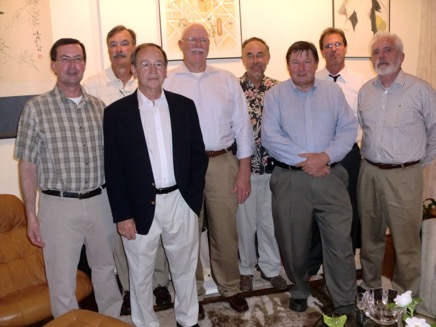
Satellite Jamming Sleuths at 25th Reunion: “Joe” Monie, Charles Magin, Dick Smith, Richard Engelman, Michael Marcus, James Higgins, Bob Weller, George Dillon
Frequencies Above 95 GHz: Why Not Declare that Section 7 Presumably Applies in Order to Stimulate US Innovation and Economic Growth?
135 GHz antenna developed by Singapore
government lab and announced last week
(The fact that this antenna looks so unusual is an
indication that technology at this band is very
different and conventional regulatory thinking
may be inappropriate.)
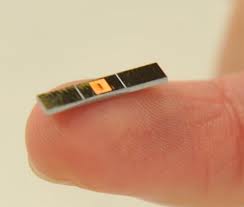
Almost on cue from my 8/25/22 post on moving the upper limit of FCC radio service rules above 95 GHz, RF Globalnet published on 8/28/12 a post entitled “A*STAR's IME Develops Smallest Antenna That Can Increase WiFi Speed By 200 Times”. A*STAR is the Singapore Agency for Science, Technology and Research, the “lead agency for fostering world-class scientific research and talent for a vibrant knowledge-based and innovation-driven Singapore” - somewhat of a combination of the US’ NSF and national laboratories (e.g. Argonne National Lab) in a state capitalism industry model. (Original A*STAR press release)
The RF Globalnet article reported (in Singapore/Commonwealth spelling):
Researchers from A*STAR’s Institute of Microelectronics (IME) have developed the first compact high performance silicon-based cavity-backed slot (CBS) antenna that operates at 135 GHz. The antenna demonstrated 30 times stronger signal transmission over on-chip antennas at 135 GHz. At just 1.6mm x 1.2mm, approximately the size of a sesame seed, it is the smallest silicon-based CBS antenna reported to date for ready integration with active circuits. IME’s innovation will help realise a wireless communication system with very small form factor and almost two-thirds cheaper than a conventional CBS antenna. The antenna, in combination with other millimetre-wave building blocks, can support wireless speed of 20 Gbps – more than 200 times faster than present day Wi-Fi, to allow ultra fast point-to-point access to rich media content, relevant to online learning and entertainment.
So the Japanese have a product prototype at 120 GHz that they used at the Olympics 4 years ago and a Singapore government lab is developing 135 GHz commercial technology. Where do US firms stand? There is some interest among US firms in this area. The US-based IWPC MoGig group includes several US entities such as AT&T and Northrop Grumman. But a rational “due diligence” assessment of regulatory risk by anyone wanting to invest in R&D in these bands would lead to great regulatory uncertainties at present:
- Only experiment licenses are possible with no guarantee of renewal or expectation of protection
- Unlicensed use is impossible
- The legality of equipment sales is questionable
- The time for FCC to respond to a waiver request or a petition for rulemaking to permit a specific product to be sold and used in these bands is in the multiyear range and the need for NTIA coordination (all these bands are G/NG shared) is complicated since there is no public information on federal government uses or requirements in these bands other than radio astronomy and passive sensing
Recall the words of Comm. Pai in his maiden speech at CMU in July:
I’ve met with those in the private sector who decide whether to make investments and to create jobs and have asked what’s holding them back. The principal answer that I have received has been remarkably consistent, and it can be summed up in two words: “regulatory uncertainty.”
Some of the factors that contribute to this uncertainty fall outside of the FCC’s jurisdiction, such as taxes, health care, and financial regulation. But concerns are expressed regarding the FCC in two general ways. The first involves inaction, or delayed action, by the Commission. At first blush, it may seem odd for those in the private sector to be complaining that its regulator is moving too slowly. Entrepreneurs are usually happy to be left alone, free to innovate without government intervention.
But the communications industry often doesn’t fit that stereotype given the FCC’s pervasive role. If a company wants to market a new mobile device, it needs the FCC’s approval. If a company wants to purchase another firm’s spectrum licenses, it needs the FCC’s approval. If a company wants to provide a new wireless service, it needs the FCC’s approval. And if a company finds that there isn’t any spectrum available and proposes the reallocation of inefficiently used spectrum, it needs the FCC’s approval.
In the same CMU speech Comm. Pai rediscovered Section 7 of the Communications Act. I say “rediscovered” because FCC has been consistently ignoring it under both Republican and Democratic administrations since it was passed in 1983. (While I have wondered if Section 7 was redacted from all copies of the Comm Act at FCC, an 8th Floor insider has assured me recently that it isn’t, and it is not censured from the online version of WestLaw at FCC either.)
Comm. Pai has the same understanding of Section 7 that I have:
“Looking at that provision, the message from Congress is clear: The Commission should make the deployment of new technologies and new services a priority, resolving any concerns about them within a year.”
It is interesting to read Section 7(a) (47 USC 157(a)) in the light of the FCC/NTIA Section 301/305 dichotomy and in view of the fact that any action in these shared bands de facto requires NTIA concurrence. Without the benefit of any formal legal education, let me state that the policy provisions of Section 7(a) applies to both FCC and NTIA. Further, the requirement that
Any person or party (other than the Commission) who opposes a new technology or service proposed to be permitted under this chapter shall have the burden to demonstrate that such proposal is inconsistent with the public interest.
would indicate that NTIA (and IRAC) is a “person or party other than the Commission” and thus has “burden to demonstrate that such proposal is inconsistent with the public interest”.
But here is a humble suggestion:
Why don’t FCC and NTIA jointly declare that any proposed private sector use of frequencies greater than 95 GHz will be presumptively treated as a “new technology or service” and that FCC and NTIA will both strive to meet the 1 year deadline of section 7(b) and the burden tests of Section 7(a)? Further, why doesn’t FCC use the same “shot clock” for tracking such actions as it already uses for corporate mergers where there is no statutory deadline?
Benefits? Stimulating innovation and economic growth and bringing FCC into compliance with this neglected section of the Act.
FAA and Passenger Electronics Use
Will the familiar warning for airline passengers to "discontinue the use of all portable electronic devices" become a relic of the past?
Perhaps.
By popular demand, the Federal Aviation Administration is forming a group to study policies governing the use of consumer electronics in the sky.
The review could lead to increased use of iPads, portable DVD players and other consumer electronics in aircraft cabins.
Note that the issue here is electronics other than cell phones. Use of cell phones in aircraft is banned by FCC because at high altitudes a cell phone will “see” and impact many cell sites. Thus it will use a large amount of cellular capacity.
FCC did consider allowing femtocell-like base stations in aircraft in Docket 04-435 , but rejected the idea after a tsunami of consumer opposition about the social impact of having someone in the next seat talking loudly (since cell phones have little or no sidetone to given user feedback on appropriate speech level).
Older readers will recall that until about 20 years ago FAA forbid all cell phone use on aircraft, even when the plane was stopped on the runway. FAA wraps itself in its “safety culture” and in pandering to its constituency, e.g. ATA (now actually A4A) and AOPA - but not the general public - to be as unaccountable as possible in some decisions. (Amusingly, FAA staffers routinely criticize FCC for being too close to its constituency.)
The oral traditional about the change about 20 years ago was that a key member of Congress with oversight authority over FAA was trapped on a plane at DCA’s runway for 2 hours without being able to use his cell phone. When he got back to his office he summoned the FAA Administrator and demanded a justification for the then existing rule on no cell phone use ever in aircraft. When the FAA Administrator finally demanded from his middle managers an explanation, he saw he “had no cards” and the present policy of limited cell phone use on the runway was quickly adopted.
As a service to SpectrumTalk readers, here is a link to the actual FAA “ Notice of policy; request for comments” on Passenger Use of Portable Electronic Devices on Board Aircraft .
DATES: Written comments must be received on or before October 30, 2012
Note that this document states “The FCC will be a key partner in this activity working collaboratively with the FAA, airlines, and the manufacturers to explore broader use of PEDS in flight.” I would like to believe this is true, but as someone with 2 awards from the FAA Administrator for helping FAA resolve critical safety problems, this statement does not ring true. Also, the inability of the FAA spokesman at the FCC Receiver workshop in March to even mentioned the longstanding FM/ILS disagreement between the 2 agencies shows that bilateral collegiality has a long way to go between these agencies. NTIA continues to turn a blind eye to such issues.
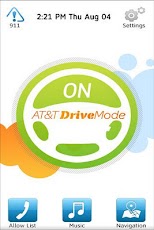
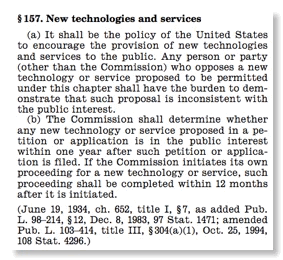
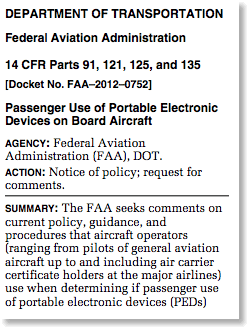



![Validate my RSS feed [Valid RSS]](valid-rss-rogers.png)

